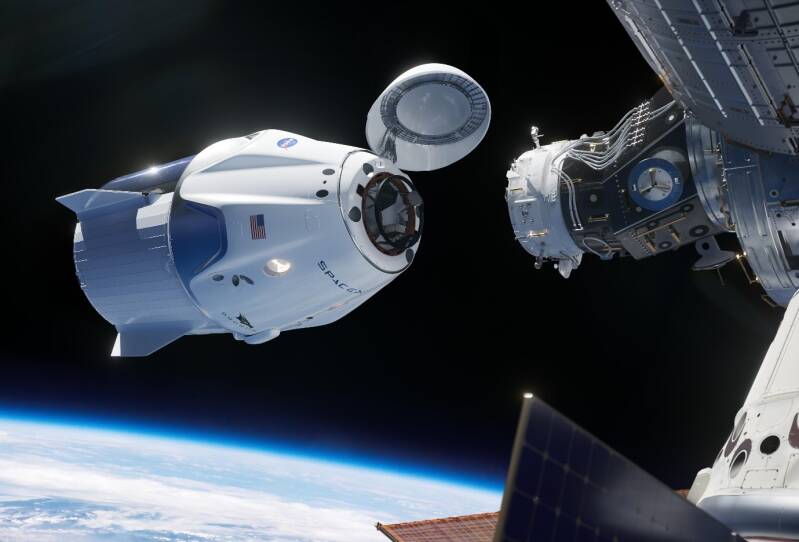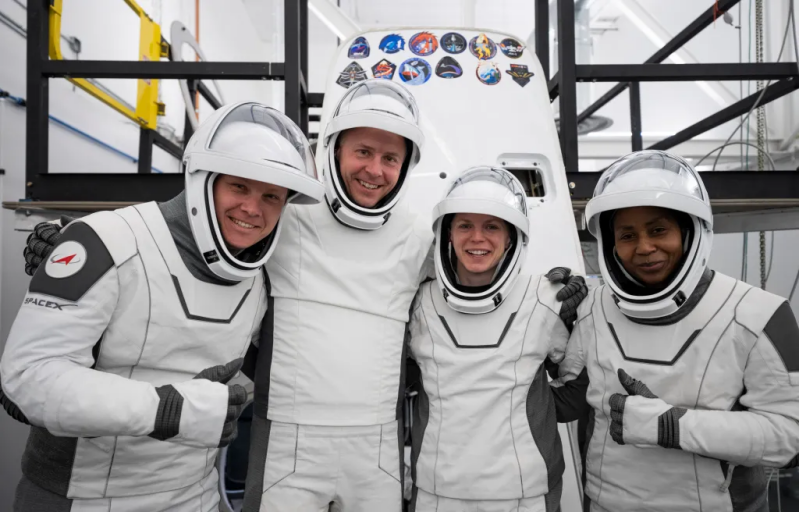NASA and SpaceX are gearing up for the Crew 9 mission to the International Space Station (ISS), scheduled to launch no earlier than August 18th. The mission will involve a series of complex operations, including undocking and bringing the previous crew home, launching the Crew 9 mission, and facilitating a direct handover.

Artists' impression of a Crew Dragon approaching the forward port of Harmony on the ISS.
The Crew 9 mission will fly aboard Dragon Freedom for its fourth flight, carrying NASA astronauts Zena Cardman, Nick Hague and Stephanie Wilson, along with cosmonaut Alexsandr Gorbunov of Roscosmos, to the space station in a Dragon capsule and emphasizing scientific research, particularly on studying intermittent flame spread to improve wildfire predictions, cell changes due to long-duration spaceflight, and the physics of neutron stars.
However, the mission has faced challenges, including an engine leak caused by a crack in a pressure sensor line due to fatigue, which led to cooling issues, damaged engine hardware, and loss of steering capability. NASA and SpaceX have worked meticulously to address these issues, and the FAA has approved SpaceX to return to flight.
The mission has also involved a comprehensive review of every system on the vehicle, and NASA has oversight into recovery from anomalies. The issue observed on the Starlink mission would not have
occurred on a Dragon mission due to different mission profiles.

From right, members of NASA’s SpaceX Crew-9 crew Stephanie Wilson, mission specialist; Zena Cardman, commander; Nick Hague, pilot; and Roscosmos cosmonaut Alexander Gorbunov, mission specialist, pose for a group photo at SpaceX headquarters in Hawthorne, California, on Monday, May 6, 2024. Image Credit: SpaceX
SpaceX and NASA have closely collaborated to analyze potential issues in the Crew 9 mission, and attention to detail has been crucial in addressing small changes that can have significant impacts.
The mission will also involve transitioning Dragon recovery operations to the West Coast for public safety and operational benefits, including software changes to complete deorbit burn before jettisoning the trunk and intentionally landing it in an unpopulated area of the ocean. Repeated issues with large chunks of debris from Dragon — "trunks" where the fuel and electrical supplies are held — have repeatedly crashed down in areas ranging from Australia to North Carolina. One measure to fix that will be tasking future spacecraft after Crew-9, perhaps as soon as Crew-10, to splash down on the U.S. Pacific coast, SpaceX said during a press conference today (July 26).
The Falcon 9's second stage experienced a failure on July 11 due to an oxygen leak, during a Starlink satellite launch. SpaceX says it has resolved the matter with the Federal Aviation Administration and plans launching other missions again as soon as Saturday (July 27).
NASA said the fixes the FAA approved will take place before the space agency's program control board for Crew-9, but the agency has been embedded with the SpaceX investigation all along and is confident in the work so far. "We understand exactly what SpaceX has done," NASA's Steve Stich, program manager for commercial crew, said in the briefing.
NASA is actively involved in certifying and ensuring that the issue has been dealt with in a way that meets safety standards, and the agency is busy with commercial crew activities and Starliner investigation.
The Crew 9 mission is a critical step in NASA's commercial crew program, and the agency is working closely with SpaceX to ensure the success and safety of the mission.


Add comment
Comments
NASA knows exactly what SpaceX has done and is confident in the work so far. The FAA has to approve it too before the next flight. Maybe they ought to try this with Boeing instead of turning a blind eye towards them.